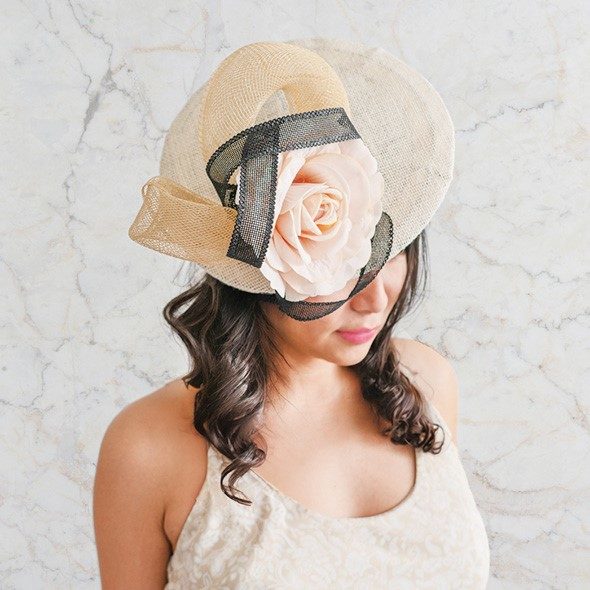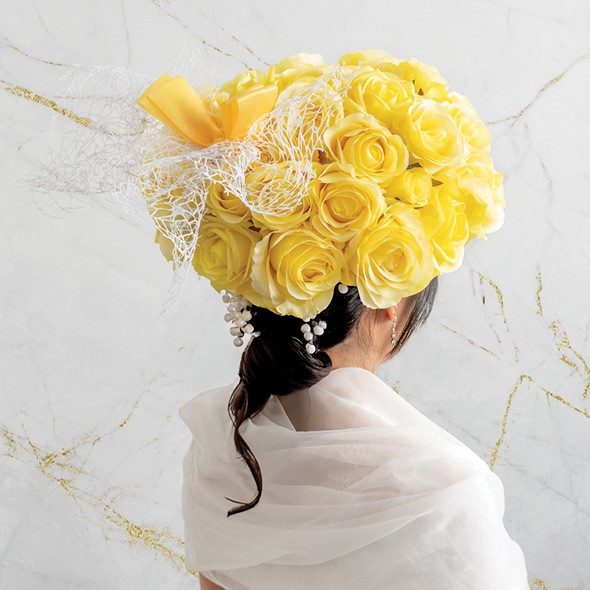
From Royalty to Runways: Unveiling the Fascinating History of the Fascinator
For hundreds of years, our tastes in fashion have been influenced by the social elite, and the fascinator is no stranger to this phenomenon. A purely decorative headpiece in its function, the fascinator has undergone notable transformations since its invention in the 1700s. Though it has faded in and out of fashion, it has proven to be an enduring symbol of status, sophistication, and self-expression.
What is a fascinator?
Coined in the 1990s, the term ‘fascinator’ refers to a type of formal headwear. Contrary to the hat, the fascinator does not cover both sides of the head (and offers little protection from the sun). A fascinator can take any form, be made from any material, and is usually attached to the head with a band or a clip.

Marie Antoinette: Inventor of the fascinator
Marie Antoinette, Queen of France in the late 1700s, is well-known for her extravagant tastes. An innovator of style in the French royal court, she is credited for inventing the fascinator. It is said that when she entered the royal court wearing an array of ostrich feathers in her hair, noblewomen followed suit, and the fascinator was born. Within this era, fascinators were crafted from opulent imported and handcrafted materials such as lace, feathers, ribbons, and precious jewels.
After Marie Antoinette was famously executed in the uprising of the French Revolution, status symbols of the bourgeoisie fell out of fashion in favour of a more working-class fashion style.

The Bonnet Era of Victorian England
During the 19th century, women of the Western world always wore head coverings when outdoors or in public. In this era, the bonnet reigned supreme, but beautifully crafted bonnets were reserved almost exclusively for the elite.

However, after centuries as an exclusive status symbol of the upper classes, the Industrial Revolution saw affordable fashion produced en masse for the first time.
20th Century Fascinator Revival
Amidst the strife of World War I and The Great Depression of the early-mid 20th century, fashion became more utilitarian. With hats dropping in popularity after the roaring 20s, the latter half of this century saw the revival of a smaller version of the fascinator as an optional accessory for special occasions.
The 1940s & ’50s fascinator
In the wake of World War II, hats became less popular and notably smaller. At this time, small, simple fascinators were the most popular choice for women’s headwear. More lavish designs were often adorned with floral accents, veils, or faux feathers.
The 1960s fascinator
As has been true of the fashion influence of royals for centuries, First Lady and 1960s style icon Jackie Kennedy influenced multitudes when she donned a matching wool coat and domed hat to her husband’s presidential inauguration in 1961. Pillbox hats would become the First Lady’s signature accessory, and the look became synonymous with the fashion of this decade.

21st Century Cultural Significance & Relevance
In the 21st century, fascinators hold a niche position in the zeitgeist of traditional fashion and events. They are often seen gracing the heads of celebrities, royalty, and fashion enthusiasts at events like royal weddings, royal funerals, and horse racing festivals.
Under the influence of the reign of Queen Elizabeth II, who was famously almost never seen outdoors without a hat, events such as Ladies Day at the Royal Ascot Derby have become culturally significant celebrations of modern hat and fascinator design.

Fascinators today
In recent years, fascinators have diversified into various forms, including botanical fascinators. Botanical fascinators incorporate real or faux flowers. Artificial flowers offer a durable and cost-effective option for fashion enthusiasts who want to embrace the floral trend.
In recent years, we have also seen the entrance of the minimalistic fascinator. Often taking the form of a functional hair accessory, such as a bow or headband, this micro trend exemplifies the ebb and flow of fascinator trends over time.

The DIY Fascinator
Though fascinators are often associated with professional millinery, DIY fascinators provide a unique opportunity to personalise a look, express an idea, recall a bygone era, or convey humour.

As we reflect on the evolution of fascinators, it becomes evident that they have not only endured but flourished. Indeed, the adaption of the fascinator to changing fashion trends across different eras is a testament to their enduring appeal.
Whether professionally crafted or lovingly handmade, fascinators continue to inspire creativity and awe. In a world of fast fashion, fascinators remain a beacon celebrating the beauty of self-expression and the artistry of fashion.
For more information on the DIY fascinators above, explore the Koch Inspiration pages for our Neutral Mesh Fascinator, Pearl & Satin Hair Bow, and Rose Pillbox Hatinator. For more historical content, check out our other Koch blog, A History of the Hat Box.
The post From Royalty to Runways: Unveiling the Fascinating History of the Fascinator appeared first on Koch & Co Blog.